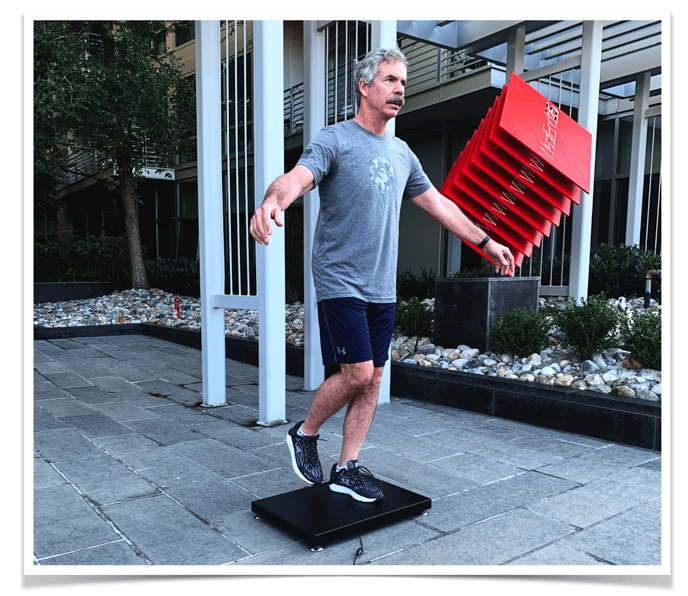The Balance Scan consists of a series of single leg balance trials and is utilized to assess balance, stability, and proprioception.
Balance ability is related to health, performance, movement function, and risk across numerous populations and can be reliably measured utilizing the Balance Scan. This scan specifically measures an individual's ability to balance holistically, by assessing single-leg balance function and capability. Balance capabilities are not static nor inherent. They can be improved through exercise and can be adversely impacted by a variety of different underlying physical ailments.
Research has shown balance ability to be a valid indicator for fall-risk in general populations, as an early warning sign of Parkinson's disease and diabetes, as well as an indicator of higher risk of lower limb injury in athletes. Our ability to balance utilizes complex interactions between different systems of the body. Functions from our nervous system (brain), musculoskeletal system (muscles/bones), and vestibular system (inner ear) can all be analyzed simply from the Balance Scan. These findings show that balance tests can be utilized as a reliable and valid assessment of human balance capability.

The Balance Scan also has the benefit of being an extremely low intensity assessment. Elderly, injured, or post-injury individuals who may not be cleared for dynamic assessment are often able to perform a balance test. In the rehabilitative setting, this allows for a much earlier objective assessment of the individual and can help to guide rehab protocols as well as track progress. Balance assessments are also often utilized in the clinical setting after a concussion or traumatic brain injury (TBI) to assess progress and compare with pre-injury or database thresholds for healthy individuals. Balance tasks can be utilized by populations of all ages and abilities, including elderly, sedentary, or immobile individuals who may be unable to or uncomfortable performing more dynamic assessments.
